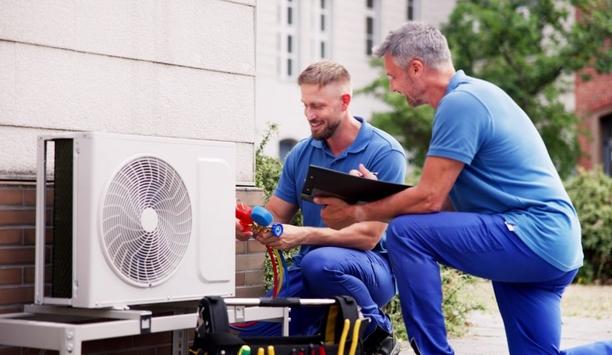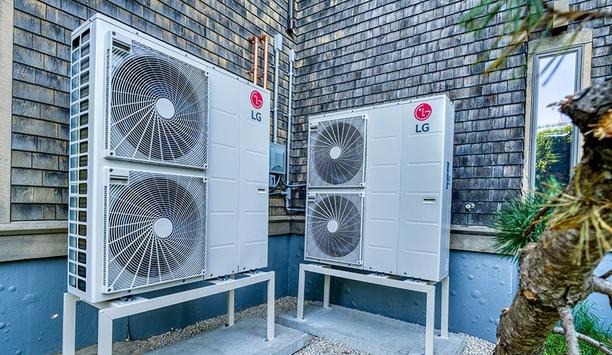Rapid Locking System (RLS) - Experts & Thought Leaders
Latest Rapid Locking System (RLS) news & announcements
RLS has launched a new online training portal that allows HVAC and refrigeration contractors to make faster, easier, and safer copper tube connections using the company's flame-free press-to-connect fittings. In conjunction with the new training program, RLS has also introduced a new company logo. a comprehensive new training program RLS LLC (“RLS”), manufacturer of the first press-to-connect fittings for the HVAC and refrigeration industries, announces the launch of their new RLS Certified Installer online training program. The new training portal walks HVAC/R contractors through the step-by-step process of making reliable, permanent copper tube connections using RLS press technology. “We’re very excited to offer this comprehensive new training program for users of RLS press fittings,” said Paul Schubert, President of RLS. certificate of completion Users must pass a series of quizzes as they work through each section of the training program Schubert adds, “The new portal explains our patented press technology, how and why it works so well, and the steps required for proper installation. Both audio descriptions and video demonstrations are used to reinforce the material and facilitate learning.” Users must pass a series of quizzes as they work through each section of the training program, as well as a final test after completing the entire course. After passing the final test, a customized certificate of completion can be downloaded. New company logo In conjunction with the new training program launch, RLS has also introduced a new company logo. The new design comes as the company celebrates the sixth anniversary of the introduction of its revolutionary technology to the HVAC/R market. Originally introduced in 2015 under the ZoomLock® brand through a partnership with Parker Hannifin Corporation, RLS fittings are now sold exclusively under the RLS brand. Emphasis on patented designs We felt it was time to give our logo a new look that represents our leadership position" “Now that RLS press fittings have taken on their own identity in the marketplace, we felt it was time to give our logo a new look that represents our leadership position in the industry,” said Schubert. “The logo emphasizes our patented fitting design, including the unique flared ends which make it instantly recognizable as an HVAC/R fitting, setting it apart from those used for plumbing.” fittings manufacturers RLS designs develop and proudly manufactures its fittings in America, at its centrally located Missouri factory. The press fittings replace the time-consuming and demanding conventional practice of manually brazing HVAC/R copper joints. RLS fittings allow for faster, more consistent connections that reduce total installed costs while also enhancing safety since they do not require an open flame.
Insights & Opinions from thought leaders at Rapid Locking System (RLS)
Installing HVAC equipment is not as simple as plugging in an appliance. Installers often face many hurdles, including complex system design, space constraints, accurate sizing and load calculation, and proper ductwork installation. But what are we forgetting? We asked our Expert Panel Roundtable: What is the most overlooked factor when installing HVAC systems?
Building design and HVAC are interdependent aspects of creating a comfortable, healthy, energy-efficient, and functional indoor environment. How important is collaboration as architects and HVAC engineers seek to ensure that a building's form and function are harmonized with an efficient and effective HVAC system? We asked our Expert Panel Roundtable: How does building design impact HVAC systems – and vice versa?
It’s an exciting and challenging time to be an HVACR professional. The industry is rapidly evolving to implement advanced technology and adapt to environmentally conscious regulations all while experiencing a skilled labor shortage. As contractors struggle to keep up, many are turning to HVACR press fittings for their efficiency, safety, and reliability. The demand for these press fittings has nearly doubled in the past five years alone. unique characteristics While the global shift to press continues to gain traction, the drivers and patterns for their adoption differ based on the unique characteristics and regulations of each region. Let’s explore how contractors around the world are implementing press to maximize their businesses. United States & Canada The key factors driving this trend are the speed and consistency of installation, which results in reduced labor In the U.S., press fittings are primarily used for larger-scale projects, including VRF applications, commercial buildings, institutions, and multi-family homes. However, residential contractors are also starting to adopt the press. The key factors driving this trend are the speed and consistency of installation, which results in reduced labor and material costs, allowing contractors to complete more jobs in less time. This is especially crucial in a country experiencing a severe shortage of skilled labor, as novice technicians can learn to install press fittings in a single training session. Adoption of press fittings In Canada, the adoption of press fittings is also focused on large-scale commercial projects. However, another major driver for using press fittings in Canada is the flameless installation aspect, which is particularly useful for projects in sensitive environments like healthcare facilities, government buildings, and occupied structures. Unlike the U.S., where press fittings are widely accepted, only one press fitting manufacturer is approved in Canada: Rapid Locking System (RLS). This is because Canada’s HVAC industry is heavily regulated by the Technical Standards and Safety Authority (TSSA), whose regulations are stringent and many other press manufacturers have not been approved for use in the country. Press adoption The U.S. has seen the highest rate of press adoption on its east coast, primarily the New England region While contractors in both the United States and Canada seem to have similar motives for converting to the press, the countries are seeing the most growth on opposite coasts. The U.S. has seen the highest rate of press adoption on its east coast, primarily the New England region, where commercial development is booming. Although Canadian contractors have been slower to adopt press, many are based in the western providence of British Columbia where large metro areas such as Vancouver experience higher building values and the speed of completing projects is consequential. Latin America Contractors in Latin America are increasingly adopting press fittings due to their straightforward implementation and reduced training requirements. The lack of formal trade schools in the region makes quick, easy-to-replicate training critical for contractors. Labor is often inexpensive but with minimal training, press fittings offer a reliable alternative to brazing, providing consistent results without requiring advanced skills. This is particularly appealing in a market where investing in contractor education is more expensive than simply employing them to do the job. High call-back percentage Press fittings address this issue by virtually eliminating the chance of human error, leading to fewer reworks The high call-back percentage in Latin America— which sits around 90% is largely due to untrained and inexperienced contractors installing HVAC/R equipment incorrectly. Press fittings address this issue by virtually eliminating the chance of human error, leading to fewer reworks and greater overall efficiency. For larger projects such as VRF systems, commercial buildings, and government contracts, the consistency and reliability of press fittings are crucial. Contractors working on these projects need tools and processes that ensure the work is done right the first time. On-site efficiencies The implementation of press in Latin America has not only improved the quality of installations but also enhanced on-site efficiencies. With press fittings, the need for extensive brazing and complex procedures is minimized, allowing contractors to complete jobs with fewer people and in significantly less time. Use of specialized tools and jaws The use of specialized tools and jaws ensures consistent connections across different contractors, reducing errors The use of specialized tools and jaws ensures consistent connections across different contractors, reducing errors and providing peace of mind in a market where rework can be costly and time-consuming. This approach enables contractors to deliver reliable results while maintaining a price-conscious mindset, ultimately driving profitability and customer satisfaction. Australia Australian HVAC contractors are very proud of their brazing craftmanship, and for good reason. Still, the adoption of press fittings is gaining traction, primarily for its health and safety benefits. Press fittings eliminate the need for open flames, significantly reducing fire hazards, which is especially crucial in a country prone to wildfires. This feature not only helps prevent accidental ignitions but also makes working conditions safer during the scorching Australian summers when temperatures soar and the risk of heat stroke increases. Press fittings advantages The ability to bypass the need for hot work permits, which can streamline the installation process Additionally, using press fittings allows contractors to avoid lugging heavy brazing equipment to job sites, offering a more convenient and efficient workflow. Another advantage of press fittings in Australia is the ability to bypass the need for hot work permits, which can streamline the installation process and save contractors significant time. This is because press fittings don't require open flames or additional fire safety precautions like fire spotters and fire safety equipment. Reducing costs By eliminating these requirements, contractors can reduce costs and quickly complete more projects. While press fittings will never entirely replace brazing, they serve as a practical alternative for projects where safety and efficiency are paramount, offering contractors a more adaptable solution for their installation needs. Addressing labor shortages Despite the varying reasons for embracing press fittings, the common thread across all regions is the emphasis on efficiency, safety, and the need to address labor shortages. As the HVACR industry continues to evolve, press fittings are poised to become an increasingly indispensable tool, empowering contractors to deliver reliable and cost-effective installations while meeting the demands of a dynamic global market.
From A To L: Your A2L Transition Guide
DownloadLeveraging Radiant And Hydronics To Help Achieve Decarbonization Goals
DownloadSealed Connectors In Harsh Environments
DownloadPowering And Cooling Next Generation Data Centers
DownloadDebunking Myths To Promote A Bright Future For Heat Pumps
Download










